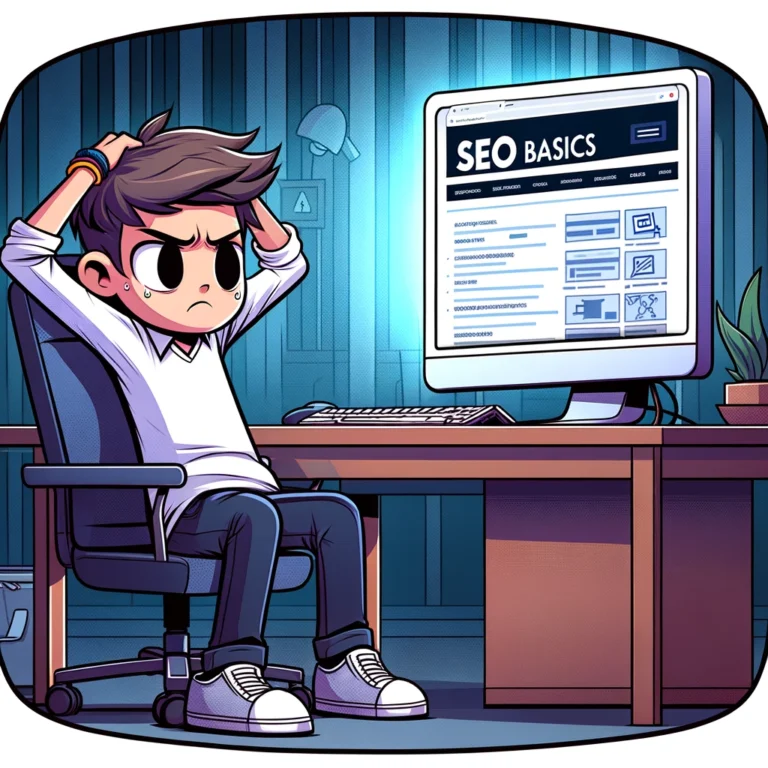In the visually driven world of digital marketing, image SEO is a crucial component that can significantly enhance your website’s visibility and performance in search engine results. Unlike traditional text-based SEO, image SEO focuses on optimizing visual content, ensuring that images are not only appealing but also discoverable by search engines. Here’s your complete guide on how to master image SEO and give your website a competitive edge.
Understanding Image SEO
Image SEO refers to the optimization of graphics, photos, and other visual media so they can be efficiently indexed and ranked by search engines like Google. Just as with textual content, optimized images can attract traffic to your website, enhance user engagement, and contribute to an overall SEO strategy that drives your site’s visibility.
Why Image SEO Matters
With the advancement in search algorithms, search engines now give considerable weight to visual content. Images can appear in regular search results, dedicated image searches, and even featured snippets, offering multiple pathways for potential visitors to find your website. Moreover, well-optimized images can speed up page loading times, improve user experience, and support your site’s accessibility features.
Key Strategies for Image SEO
1. Choose the Right Images
The selection of high-quality and relevant images is the foundation of effective image SEO. Use original, high-resolution images that are directly relevant to the accompanying content. Stock photos can be used, but unique images generally provide more value in terms of SEO and user engagement.
2. Optimize Image File Names
Before uploading an image to your website, rename the file with relevant, descriptive keywords. This helps search engines understand what the image is about and its context within your site. For example, instead of naming an image “IMG_12345.jpg,” rename it to “homemade-chocolate-chip-cookies.jpg” if it depicts cookies.
3. Reduce File Sizes
Large image files can slow down your website, negatively impacting user experience and SEO. Compress your images to reduce file size without sacrificing quality. Tools like Adobe Photoshop, TinyPNG, or JPEGmini can help compress images efficiently.
4. Use Alt Text
Alt text (alternative text) describes an image’s content and context. This not only aids in SEO but also accessibility, providing a textual description for users who might be visually impaired. Ensure your alt text is descriptive, includes relevant keywords, and fits naturally within the context.
5. Implement Structured Data
Structured data markup can help search engines better understand the content of your images. You can use schema.org vocabulary to add structured data to your images, making them eligible for rich results in search, such as enhanced image previews.
6. Leverage Sitemaps
Including images in your sitemaps or creating a dedicated image sitemap helps search engines discover images that might not be easily found through crawling. This is particularly useful for websites where images are loaded through JavaScript or other technologies that might hinder search engines’ traditional crawling methods.
7. Focus on Page Context
Search engines consider the context of the surrounding content to understand images better. Ensure that the text surrounding your images is fully optimized and relevant. This includes headings, captions, and the body text.
8. Opt for the Right Format
Choosing the correct image format plays a crucial role in SEO. JPEGs are ideal for photographs with lots of colors, PNGs are better for images that require high detail and transparency, and WebP offers a good balance between image quality and compression.
9. Update Images Regularly
Refreshing your images regularly can signal to search engines that your content is current and relevant. This can be particularly effective for websites in industries where visuals play a crucial role, like fashion, food, or travel.
Optimizing your website’s images for SEO is not just about making them searchable. It’s about enhancing the overall user experience, reducing load times, and providing value through high-quality visuals. By implementing these strategies, you ensure that your images contribute positively to your site’s SEO, helping it rank better in search results and attract more visitors. Start focusing on image SEO today, and watch your website’s performance soar.

Image SEO in Practice: Case Studies and Examples
When it comes to mastering image SEO, nothing beats seeing real-life examples and case studies that demonstrate the principles in action. Here are a few instances where businesses effectively applied image SEO strategies, leading to noticeable improvements in their search visibility and user engagement.
Case Study 1: E-commerce Website
An e-commerce company specializing in home decor noticed that while their textual content was performing well in search engine rankings, their images were not appearing in image searches. After conducting an image SEO audit, they implemented several changes:
- Optimized file names with descriptive keywords related to the products.
- Reduced image file sizes across their product listings to improve page load times.
- Added descriptive alt text to all product images, incorporating relevant keywords without stuffing.
- Created an image sitemap and submitted it to search engines.
The result was a 50% increase in traffic from image searches within three months, contributing significantly to increased sales.
Case Study 2: Travel Blog
A popular travel blog was struggling to attract traffic through their scenic photographs, a major draw for their audience. They took the following steps to enhance their image SEO:
- Switched to the WebP format for their images, reducing sizes by 30% while maintaining quality.
- Implemented structured data for images, helping search engines understand the context and content of the photos.
- Updated images with richer captions and integrated them better with the rest of the content on the page.
These improvements led to an increase in both image visibility in SERPs and overall engagement on their site, with a 35% rise in page views from image searches.
Case Study 3: Recipe Website
A recipe website decided to overhaul its image strategy to boost its organic search results. Their approach included:
- High-quality, original images of each recipe step.
- Detailed alt text that included not just descriptions of the image but also relevant culinary terms.
- Optimized around the user experience, with images formatted to appear as part of galleries that were easy to browse.
This approach not only improved their rankings in image search but also helped them gain featured snippets in Google searches. Traffic from search engines increased by 40%, with new users specifically citing images as a key factor in their engagement.
Best Practices for Consistent Image SEO Success
Building on these case studies, here are some best practices that can help any website improve its image SEO:
- Regularly Check Image Performance: Use tools like Google Analytics and Google Search Console to monitor how your images are performing in search results. Look for trends and patterns that can inform your ongoing SEO strategies.
- Stay Updated on SEO Trends: Search engine algorithms are constantly evolving. What works today might not work tomorrow, so staying informed about the latest SEO trends and adjustments is crucial.
- User-Centered Optimization: Always prioritize the user experience. Faster load times, high-quality images, and relevant alt text improve both SEO and user satisfaction.
- Integrate Images with Overall SEO: Treat images as an integral part of your SEO strategy rather than an afterthought. Ensure they complement and enhance your textual content for the best results.
Conclusion
The power of image SEO extends beyond simple optimizations and into strategic decisions that can dramatically influence your website’s traffic and user engagement. Whether you run a large e-commerce site, a personal blog, or a professional portfolio, applying these principles can lead to significant improvements. Start with basic optimizations and continue to refine your strategies based on performance data and evolving best practices. Embrace the visual nature of the internet, optimize intelligently, and watch your site rise to new heights in search engine results.



